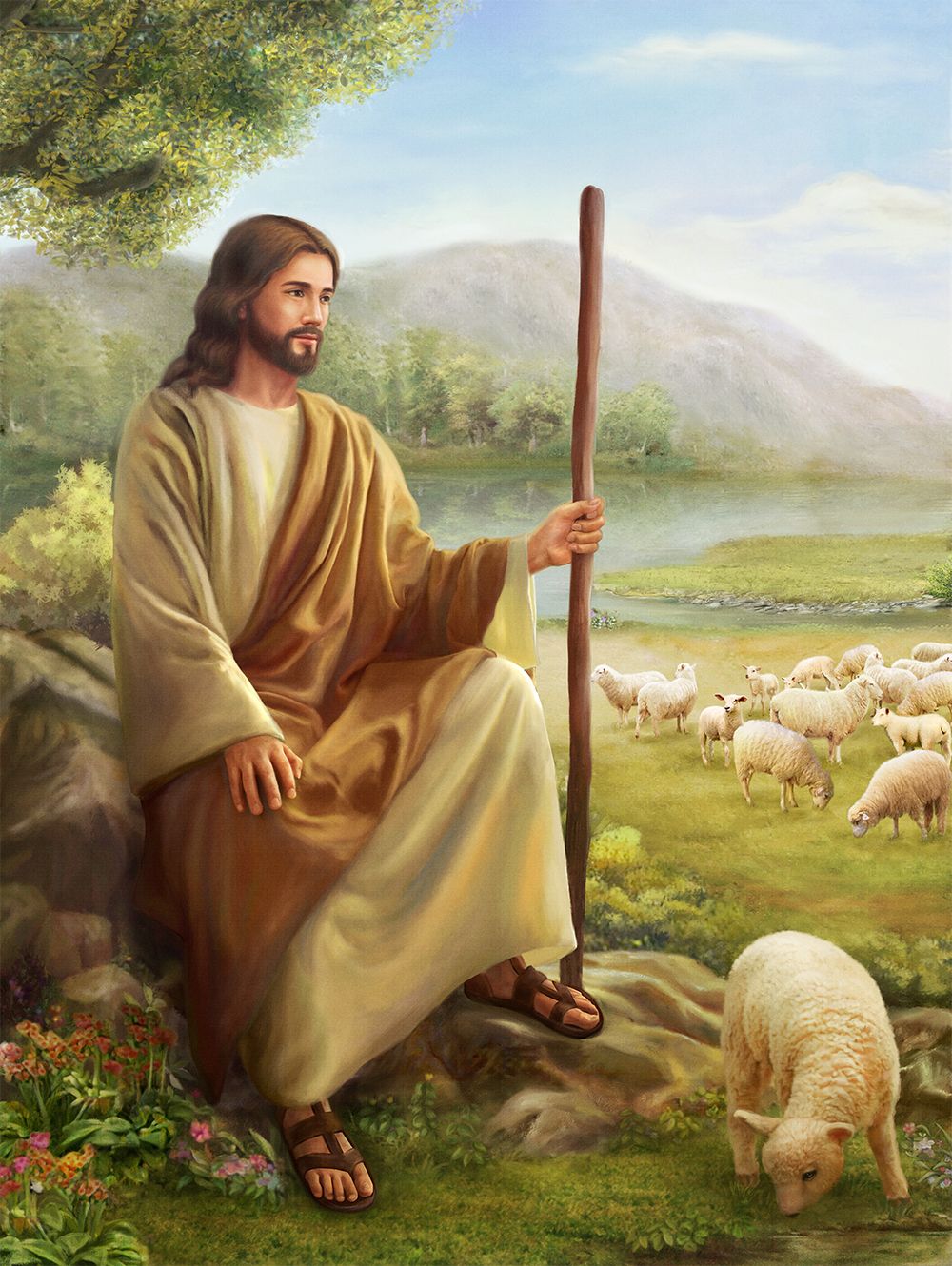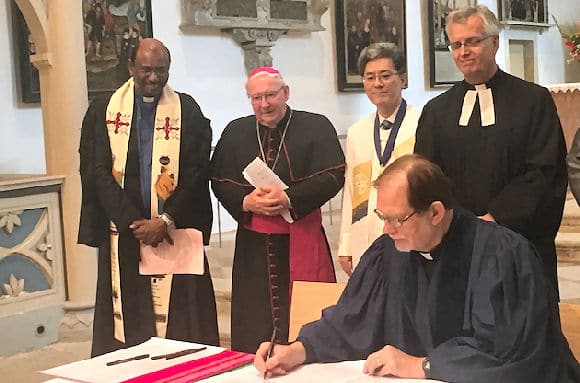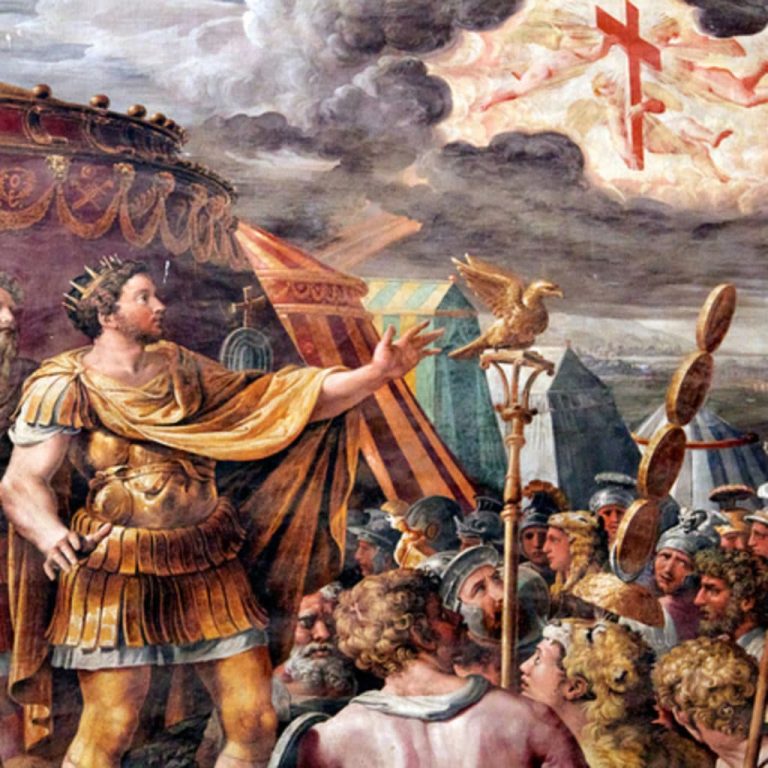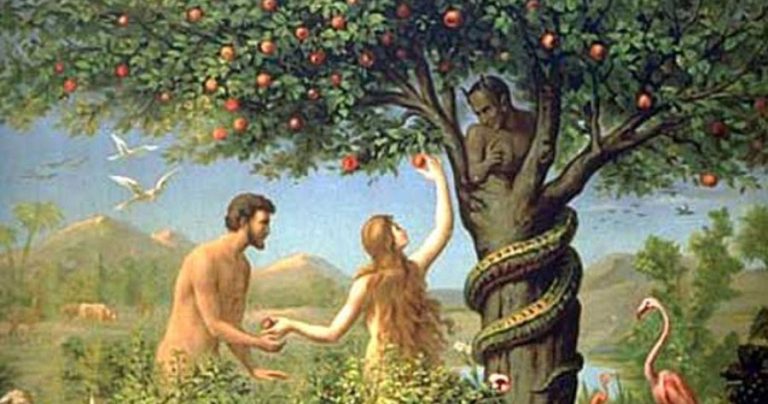Jesus had blood brothers? who were they?
The Brothers of Jesus, constitutes an interesting topic, knowing how many there were and which ones were on the part of his father José allows us to know more about the life of Jesus and his family relationship, learn more about this topic by reading the following article.
Brothers of Jesus
When Jesus began to preach in Nazareth, the inhabitants wondered if he was the brother of James, Joseph, Simon and Judas, but also wondered if he was the son of Mary and the carpenter named Joseph, these references are reflected in the canonical gospels, as a review that can give an indication of who the brothers of Jesus really were.
It was said that Jesus was a preacher of bells, that is, not of a very good reputation, but little by little he was convincing many people. This situation allowed Jesus to be known in many regions, his brothers, after Jesus began to gain fame, remained relegated to second place leading a quiet and normal life.
It is believed that Jesus and according to some historical and Biblical texts had only four brothers, taking into account that the virginity of Mary is only a symbolic religious term, but that it has also brought various differences between orthodox Protestants and Catholics.
These discussions have lasted for years, the criteria of depth and analysis regarding the virginity of Mary focus the issue also referring to the brothers of Jesus, a few years ago the issue became relevant again, when some ossuaries were discovered that according to archaeologists belong to James the son of Mary and the Brother of Jesus.
Knowing the true family line of Jesus over all of his brothers is quite complicated, however various historical reviews can help unravel part of his life. We can start from the grandparents of Jesus in order to analyze his family lineage, for example the maternal grandparents of Jesus does not seem an easy task, since there are no references in the gospel regarding them.
Likewise, the protoevangelium of Santiago shows us something interesting, it consists of a text called apocryphal, not including the Bible, of course, and which describes a certain Joaquín and Ana as the parents of María.
With regard to the stepfather (if it can be called that), Joseph, his grandparents appear referenced in the Gospel of Luke, where it is said that the paternal grandfather of Jesus was called Jacob, while in the same Gospel a certain Luke is honored, surely they sought the genealogical union of Jesus with David through his adoptive father Joseph.
Since if that lineage did not exist, he could never have been the long-awaited Messiah by the believers of the word. Regarding the life of José (His adoptive father of him) also very little is known, according to some historians he was a construction and carpentry worker (Tekkon).
He is named several times in the New Testament, but after the events that occurred with Jesus, nothing more can be learned about him. Regarding Mary, there is a lot of information in the New Testament and even in many apocryphal gospels.
In these texts, they mostly describe her as a virgin from Nazareth who conceived the child thanks to the work of the Holy Spirit, later giving birth to a baby in such a special way that she did not lose her virginity, it could only have been the work of God, and This is where the higher-level discussions come in, which have brought so much difference to various Christian currents.
The various gospels name the brothers of Jesus on many occasions, they even use a Greek word called “Adelphos” which for attraction and meaning refers to brothers and cousins, which may also have created confusion when speaking of the brothers of Jesus. Jesus who could have even been some cousins, children of the sister of María Called Ana.
Regarding this issue, it is verified in the Bible that Jesus had other direct brothers who were born from the union of Mary and Joseph, those already named James, Joseph, Judas and Simon, but it is also said that some daughters were born.
The discussions between Orthodox and traditional Christians is at the point where the so-called half-brothers appear, who were the children of Joseph prior to the union with Mary, this presumes that the children of both were not really Mary’s, but were the ones he had in his previous marriage, and the four named children were not born by Maria.
Catholics establish that the virginity of Mary remained intact since the only person who could conceive Jesus was her, but through the work of the Holy Spirit, a direct mandate from God, they also establish that Mary was a virgin before, during and after childbirth. of Jesus.
The so-called Catholic exegetes consider that Jesus did have several blood brothers, and therefore the existence of blood brothers, is real, but they do not say it very openly so as not to create a scandal. Because it is necessary (According to their textual words), the deepening of the analysis of the Church, they also propose the following:
“We accept the virginity of Mary and, at the same time, it seems more likely to us that Jesus was born from the carnal relationship of Mary and Joseph, because virginity means that Jesus is born from the mystery of God.”
“I already know that by saying this we are taking a risk, and we not only have the right, but also the duty to freely express the fruit of the investigations that the Church should know.”
The topic is open and knowing about the brothers of Jesus will be interesting to show you the point of view and our intention in this article.
The four brothers of Jesus
According to most historical and religious references, Jesus had only four brothers, James, Joseph, Simon and Luke, mentioned in Luke and Mark, texts of the Bible, however, as we said at the beginning, a series of divergent and very dissimilar criteria have existed. that have caused this topic to be discussed by historians, philosophers and theologians.
The first approach is based on deciphering if the names of Jesus’ brothers were real or if they were simply half-brothers, meaning that they were true children of Mary and Joseph, then the approach as to whether they were only children of Joseph, but not of Mary and They would then be Jesus’ stepbrothers.
It is also believed that they were only cousins on the mother’s side or on Joseph’s side, there is not really a criterion and a verification that allows to consolidate any of these theories, what is known is that the four brothers or cousins of Jesus existed, since they are named in many religious and historical texts.
For those who propose the second theory, they establish that they must have been stepbrothers and that Joseph had had those children prior to the union with Mary, which does not lead to the consideration that this behavior is an Eastern tradition, where the children of another marriage are assumed. by the woman as their own.
In the verse of John where he speaks that Jesus left his mother in the care of John, for many leaving her with an apostle would mean the same as a brother, or that the brother was not, instead of leaving her in the care of what would be his another brother, who is not mentioned in any biblical text, however there is no reference to Jesus that mentions his brothers as such.
The third approach regarding their kinship was that of cousins, it is simply a conjecture that has had little root in the criteria of many scholars, some biblical writings mention the brothers after the Wedding at Cana.
Another relevant aspect is the mention made in the final days of Jesus’ life, where the brothers are described as inviting the Master to verify that he really was the Messiah, which indicated that they themselves doubted Jesus’ personality as savior.
What does the New Testament say
This part of the sacred book can help us to decipher some conjectures, in some passages and verses references are obtained where they name the brothers of Jesus, it is appreciated how they describe them in different ways, so searched with tweezers and magnifying glasses the comments regarding the brothers, you can really establish the veracity of the brothers of Jesus
The text in the Gospel of John
This text tells the story of Jesus regarding his attendance at the Wedding at Cana in Capernaum and says that Jesus attended “with his mother, his brothers and his disciples”. Even during the holidays the brothers rebuke Jesus and tell him the following:
“Get out of here and go to Judea, so that your disciples may also see the works you do, because no one who seeks to make himself known does anything in secret. If you do these things, show yourself to the world”.
This is the situation where the brothers still did not believe in the Messiah, however Jesus’ answer is more surprising than the question itself:
“My time has not yet come, but your time is always ready. The world cannot hate you; but he hates me, because I testify of him, that his works are bad. He go up to the party; I haven’t gone up to that party yet, because my time hasn’t expired yet.”
Jesus stayed in Galilee and did not heed the request of his brothers. This is the only account found in the Gospel of John regarding the brothers of Jesus.
synoptic gospels
The synoptic gospels (Those of Matthew, Mark and Luke) contain passages that mention brothers of Jesus, for example in Mark the following is said:
“Meanwhile, his brothers and his mother arrived and, staying outside, they sent for him. Then the people who were sitting around him told him: “Your mother and your brothers are outside and they are looking for you.”
“He answered them saying, ‘Who are my mother and my brothers?’ And looking at those who were sitting around him, he said: “Here are my mother and my brothers, because whoever does the will of God, that is my brother, my sister and my mother.”
This passage appears in all three Synoptic Gospels, and there is a striking description when a person says to Jesus:
“Your mother and your brothers are out there and they want to talk to you, Jesus replied: Who is my mother and who are my brothers? And pointing to his disciples with his hand, he added: These are my mother and my brothers. For whoever does the will of my Father in heaven is my brother, my sister, and my mother.”
As we can see, it is a spiritual symbology that Jesus makes with respect to his brothers and sisters as well as his mother, but it does not really specify if the blood brothers are there. Let’s see how Lucas reflects it:
“His mother and brothers went to see him, but they couldn’t get close because of the crowd, so they announced to Jesus: mother and your brothers are out there and want to see you. But he answered them: My mother and my brothers are the ones who listen to the Word of God and practice it.
Similarity is observed in both events and it does not relate blood brothers as legitimate, but mentions everyone who believes in the Lord as a brother. Other episodes are mentioned in the Synoptic Gospels, when Jesus was in Nazareth and the crowd crowded around him, some locals observed him and wondered if that was not the carpenter’s son and they also wondered if his mother was Maria and his brothers lived in the city.
It is clear that people related Jesus to his brothers, and in turn as the son of Joseph the carpenter, demonstrating that there really was an existence and knowledge of Jesus in the place and in turn he was linked to his family, having brothers and parents.
Other references in the New Testament
We can also appreciate how in other books of the New Testament they describe and name the brothers of Jesus, for example in the Acts of the apostles it is mentioned that
“The apostles persevered with one accord in prayer and supplication, with the women, and with Mary the mother of Jesus, and with his brothers.”
In the first epistle of the Corinthians, which is a letter from Paul the Apostle to the inhabitants of Corinth, who were in conflict, he mentions the brothers of Jesus, but does not specify whether they were brothers by blood or devotion, like many Sometimes Jesus reiterated it in his visits to many places.
Paul of Tarsus in his Epistle to the Galatians, mentions James as the brother of the Lord, but he does so as a simple reference, representing a truth of the facts, it is important to mention that Paul of Tarsus did not meet Jesus during his time in Jerusalem , did not even get to meet the Messiah.
Paul of Tarsus’s knowledge of Jesus went seriously to his appearance in front of Paul, who was previously a persecutor of Jesus’ followers, later to become the founder of Christianity.
various terms
To establish a precise criterion regarding the truth of whether Jesus had brothers , it is necessary to know the terms used by various cultures in the denomination of the term “brothers”, in the case that corresponds to us it is interesting to consider how they establish it above all the Greeks and the Jews.
These two cultures represented for the time an influence in almost all social, political and religious aspects, from all over the Middle East, Mediterranean coast and Asia Minor, that is why it is important to know with certainty in what way the brothers of Jesus can be described or placed how they will truly represent themselves.
for the greeks
In the Greek language, especially in the more traditional and classical current, the term “Brother” has the same meaning as in the Spanish language, however in the Koine language, which is a Greek Orthodox language and with which it was written in New Testament, the term “brother” could cover certain aspects and be broader.
The term can represent in some cases defining “brother” as “half brother”, which means that they can be brothers on the father or mother’s side, it also refers to the situation of the children of uncles and aunts. In the case of Jesus, it refers to terms in which he is related to James and John as blood brothers.
The term “brothers” is also established in the case of the sons of Herod the Great when some historians name Philip and Antipas as brothers, but knowing that they were from different mothers. This situation comes to consider that the brothers of Jesus were all his followers and believers, since the term in the Greek language is not specific, but established in a general way.
On the contrary, the term “cousin” never appears in the New Testament, which leads to the assumption that the term “brother” is also attributed to this family relationship, so the doubt regarding the brothers of Jesus in the Greek language it remains latent.
for the jews
As in the Greek language, in the Aramaic and Hebrew languages there is no definition of the word cousin, in fact it did not exist at that time, only the term “relative” was used, In the old Jewish Testament there is a mention with Regarding the word “brothers”, it is mentioned for example when Abraham tells Lot “We are brothers”, when in fact one was the other’s nephew, this review appears in Genesis.
At the time of Jesus, Hebrew was not a spoken or official language, it was used only for religious and cultural situations, the most widely spoken throughout the region was Aramaic, a language from the Semites, so that the term “brother ” in that language is also attributed to “cousins” or “nephews”, thus creating even greater doubt regarding the use of the word “brothers” at the time of Jesus.
It is then established that when Jesus preached in Aramaic, his followers were probably also writing in that language. However most of the scriptures of the New Testament were written in Greek, but not translated from Aramaic, but the descriptions elaborated directly in Aramaic.
We mention this semantic detail since the terms “brothers” could be used as a way to represent one’s own blood brothers, stepbrothers, cousins and nephews, so the Hebrew Bible does not shed light on the truth of the brothers of Jesus.
as a form of expression
There is a contradiction that Catholics have been able to answer and that is that the existence of Jesus’ brothers does not really agree with the virginity of Mary. Many philologists and religious historians have tried to give an exact and convincing answer regarding this situation.
It could be the case that the answers and convictions made by these researchers could make many people out of doubt and clarify a great unknown, that human beings still wonder, if Mary was really a virgin.
If true, we would be in a case in which Jesus could not have had brothers, however the possibility that he had them is also very high, because Mary and Joseph had a very normal marital life, this consideration is established by the religious who they have maintained analyzes and investigations of the scriptures for many years.
Both the Catholic and Orthodox Churches establish a similar criterion, the conception of Mary with respect to Jesus is the form of manifestation of the Holy Spirit, which through its work allows the birth of Jesus, which makes the maintenance of Mary as a virgin after of the birth of the Messiah.
She could have had other children later and this does not take away from the magnitude of the virgin figure of the world, being also the mother of Jesus and other people, Calvinism through its main figure John Calvin, considers that Mary remained a virgin, but that the descriptions in the Bible were not totally conclusive to make a determination.
The Anglicans, Lutherans, Reformists and Methodists establish that the brothers named in the Bible were really cousins of Jesus, called adelphoi, in the Greek language, the term had a different meaning, it was used to refer to a person’s own brothers or simply to the cousins, who for certain Jewish and Greek traditions had the same kinship.
In the case of Eastern Orthodox religionists, they classify the term “brother” as a way of representing the children of Joseph, who lived under the same roof with Mary and Jesus, so that they believe they were simply brothers on the father’s side. .
The rest of the Catholic Protestants consider that the virginity of Mary is not such, and that the light of God was reflected in the world when Jesus was born, but later Mary was able to give birth to four other brothers of Jesus, for which reason consider for this current the veracity of the brothers of Jesus.
The name according to the philology
This science is responsible for studying all written texts, analyzing their structure, evolution and historical meaning of each word, in order to adapt them to other languages, as well as establishing the development of the specific language and the evolution of each phrase and word.
Really discovering through philology the term “brothers” and in turn knowing how and why this term is used during that time will help to resolve many questions. For philology there is no reason to think that the brothers of Jesus are not truly his direct relatives.
They consider that they really are brothers of Jesus already mentioned at the beginning, so that Joseph and Mary conceived these four beings after the birth of Jesus, the Messiah being the eldest of them, it is also established that Jesus could have had other brothers on his part. his father, thus being the appearance of sisters in the life of Jesus.
The conclusion is reached according to certain circumstances and characteristics that determine after an analysis, the presence of these brothers of Jesus, the philology then establishes the following:
- They clarify that the biological children of Joseph and Mary, and blood brothers of Jesus of Nazareth, were real because they are named in different historical and religious texts
- In the Bible it can be read in various passages that the brothers of Jesus are mentioned and directly linked to Mary their mother, if it were not that way, they simply would not have named them or Mary, and the relationship would not make sense.
- There are many Biblical references and in other texts, related to the brothers of Jesus, for example the Gospel of Mark, the epistles of Paul of Tarsus and the Gospel of John, refer to the presence of the brothers of Jesus.
- The Historian Flavio Josefo, considered a historical bibliographical source of great non-Christian importance, mentions the brothers of Jesus and even names the presence of his mother Mary next to them.
- Each review reflects the sense of bonding between brothers and sisters with Jesus, in such a way that it is assumed that they are his true brothers, none seeks and thus it was established to consider that they really have been step-siblings, cousins or nephews, using the terms indicated above by the Hebrew, Aramaic and Greek languages.
- The authors of the New Testament, whether early Christians and the reference of the historian Flavio Josephus, used the term “Anepsios” to indicate a person as a cousin or cousin of another, Flavio Josephus used the term “Relative” a lot, which served him to define if he was a cousin or nephew of a person, which concludes that if some of the so-called brothers of Jesus were not easily his relatives, he could have named them as cousins “Anepsios” or simply relatives.
- With respect to the conception of Mary, the Philologists believe that in the stories of Matthew and Luke, this point is greatly clarified, this conception is considered as a manifestation of a theological nature, and some relate it to the situation where Jesus was really the fleshly son of Joseph.
It is concluded that divine intervention contributed to the presence and development of the Messiah through the Holy Spirit, when he appears to Joseph in dreams.
We leave to the reader’s discretion the consideration that they may have regarding the criteria established in this part, each one with their analysis can make the decision to consider the veracity of the presence and relationship of the brothers of Jesus.
as a confession
Interpreting according to historical and philological conceptions that Jesus had four brothers is not very well received by most Catholics and Christians, they do not accept that Jesus was a blood son of Joseph, and they attribute the conception of Mary only to the Holy Spirit, based on the accounts of Matthew and Luke.
The perpetual virginity of Mary is a representation of the dogma of faith that every Christian must maintain, established in various Orthodox and Catholic confessions, so that everyone accepts and interprets this situation according to the Christian spiritual current to which they belong.
So they become religious traditions that are housed in the mind and spirit of each believer, where the brothers of Jesus are simply followers and people united only through the glory of God.
Royal children of Mary and Joseph
Today and even in ancient times, the siblings of other fathers or mothers are considered siblings equally, the relationship of Joseph and Mary was marked by kindness and love between the two, for which many stories have already been written. many guesses.
So if we accept that both had a normal and calm relationship, the change in the relationship occurs when Jesus is conceived, the way and the moment made Joseph overwhelmed by this situation, however and over time, he had to accept it.
After the birth of Jesus, the couple maintained their marital relationship in a stable and normal way and it is believed that even they had several children, Mary was a simple and normal woman, the size of her figure is later established by the beliefs and the situation of having was the mother of Jesus.
In her time, Mary’s behavior was that of a normal woman, fulfilling her obligations and taking care of her children, especially Jesus. To attribute special gifts to her at that time is to pose unlikely situations full of lack of reality.
It is believed then that Jesus was the eldest of the children of the family, (without even considering that Joseph had had other children in another marriage), however as we said before for the Christians they were simply half brothers, because they believed that Joseph was not the real father of Jesus.
This position has attracted various discussions over the years, giving birth to a theory in which Jesus is humanized called Docetism, in which it is stated that the physical and mental conditions of Jesus were full of human characteristics.
Many Christians refute this idea and established that it was not possible to see Jesus as a normal human being or as any person, of course denied that it would also have been for Christians it would be impossible for him to have had brothers, due to the condition of virgin of Mary
Many believe in this proposal over all Protestants, who establish a more liberal theory, giving rise to a reform led by Martin Luther that included the non-humanization of Jesus.
This condition means that for Christians Joseph and Mary have not conceived any more children, and therefore Jesus has not had siblings, however the facts and the written references are there, anyone can consult and verify in the various texts the mentions that are made regarding the beautiful of Jesus.
the sons of joseph
In some way, Christians seek a way to demonstrate that Mary and Joseph did not have after Jesus and that therefore he had no brothers, one of the ways they have established is to affirm that Joseph had other children before marrying Mary.
For Christians, the brothers of Jesus who appear named in the New Testament are really the children of Joseph, prior to marriage. But let’s see what they are based on to say this.
They called this dilemma the “solution of Epiphanius”, who was a defender of the non-carnal theory of Jesus and maintained the idea that the Messiah had no more brothers, this criterion is raised in his work called “Panarion”, in it he explains that José was the father of Santiago, José, Simón and Judá, as well as of two sisters called Salome and María, others affirm that his real name was Salomé and Ana.
Santiago was the older brother and the rest followed in order José, Simeón and Judá, and then the females, for Epifanio they were not the son and daughter of María, they were born years before joining José, so that after the death of the first wife of the carpenter, all his children went with the father.
Epiphanius recounts that Joseph was eighty years old when he took Mary, the mother of Jesus, as his wife, and the scriptures decided to call the sons of Joseph brothers of Jesus in order to confuse their rivals and enemies.
This theory became firmer from the second century, and is reflected in the apocryphal gospel (Not accepted by the Church) called the protoevangelium of Santiago, where the virginity of Mary is defended before and after the birth of Jesus.
The text states that José was a widower with children (he does not say how many) when María left him in his care. In the Apocryphal Gospel of Thomas and the Gospel of Peter, they narrate that the brothers of Jesus are really the children of Joseph born from the previous union with another woman.
The apocryphal gospel called “The story of Joseph the carpenter”, which is a short biography of Joseph, apparently described by Jesus himself, details the relationship that Joseph had before Mary, having six “offspring”, four boys and two females.
The names of the sons were Judas, Justo, Santiago and Simón, and those of the daughters were Asia and Lidia. However, the Catholic Encyclopedia mentions some texts where stories from various apocryphal gospels are described, detailing that Joseph had six children (4 sons and 2 daughters) prior to his relationship with Mary.
The same text highlights that José was approximately forty years old when he married Marta, (the first woman before María), who is also called Escucha in some stories. He lived with her for almost fifty years and they had six children, two daughters and four boys, where the youngest was called Santiago (which the Hebrew translation qualifies as “Brother of the Lord”).
The book describes how Joseph came to Mary, let’s see:
“A year after the death of his wife, when the priests announced throughout Judea that they wished to find in the tribe of Judah some respectable man to marry Mary”
“Mary was then twelve to fourteen years old, Joseph, who was already ninety years old at that time, went to Jerusalem among the candidates, a miracle manifested God’s choice of Joseph, and two years later the Annunciation took place. ”
This story reveals the truth of Joseph’s old age, which can also be determined that it was impossible for an old man to have had another son or begotten with that age.
On the other hand, the Gospel of pseudo-Matthew, written in the 7th century, establishes that the brothers of Jesus were really the sons of Joseph, in the same text a statement by Joseph is described;
“I am an old man, and I have children; Why do you give me this young lady, who is younger than my grandchildren?… And on a certain day, José called his firstborn son, Santiago, and sent him to the garden to pick vegetables.”
The same pseudo gospel mentions the case of Joseph attending a party with his children and Mary:
“And Joseph, who had come to a feast with his sons, James, Joseph, Judas, and Simeon, and their two daughters, Jesus also attended, with Mary, his mother, together with his sister Mary of Cleopas.”
Some Eastern churches have assumed this position as true, the Orthodox Church took a while to take into account and accept this premise, they assume it as a real and possible consideration, since for the time stepbrothers were considered as “brothers 2 received equally by the mother as her children.
This leads us to think that Jesus’ brothers were really his half-brothers and to establish precisely that Joseph and Mary never had children, Jesus being the only son and Mary kept as a virgin after the birth of the messiah.
The Cousins of Jesus
In this same article we had said the interpretation that the Greek and Jewish cultures gave to the relationship of cousins, however, considering that the brothers of Jesus named in the New Testament are really his cousins, lacks veracity and is very far from being real. ¨
Although it is mysterious and strange, this position had many defenders, especially in the fourth century when Saint Jerome through his work called Adversus Helvidio, which was a text dedicated to his enemy Helvidio (He wrote several texts related to the doubt of virginity of Maria).
Helvidio maintained the criterion of Tertulliano (One of the fathers of the Church and a writer of the end of the second century and the first part of the third century) where he establishes. The possibility that Jesus had been conceived naturally, and in the same way as his brothers had been conceived, born from the union of Joseph and Mary.
Saint Jerome responds to this criterion by first saying that Tertullian does not belong to the Church, however Tertullian tells him that his arguments are based on the fact that the word “adelphos” (which we spoke about earlier), appears in the first translation that is He made the Greek from the Hebrew Bible, called the “Bible of the Septuagint.”
In the response, Tertullian affirms that the term is used to designate relations between uncle and nephew, and gives Abraham and Lot as an example; as well as Jacob and Laban in Genesis, he also argues that the mention of this word appears in Chronicles and gives it a meaning of cousins, and it is here that the only case of naming the relationship of cousins in the entire Bible can be seen.
Based on this premise Tertullian believes that not only could they have been brothers but that there were other “adhelpos” in the life of Jesus, however for many Catholic scholars, it is unlikely that Jesus even had any cousins on his parents’ side.
The Bible of the seventies uses the term “adelphos” as “cousin”, so the argument of Saint Jerome is very common, who states that its common use refers to the use and relationship of people who are children of mothers or fathers. brothers.
Jerome went on to argue that the term “adelphos” referred to the children of Mary’s sister, who was called by St. Jerome as Mary of Cleophas. There is a thinker and researcher named by the Oxford dictionary of the Christian Church, who mentions the situation that the so-called “adelphos”, were actually the children of Cleofás, (a brother of Joseph) and Mary (The sister of the virgin).
The text called “Exposition of the Sayings of the Lord of the Apostolic Father Papías de Hierapolis” who was a priest who lived between 70 and 163 AD Establishes that Mary, the wife of Cleofás or Alphaeus, is the true mother of James the Just, Simon, Judas, later to be identified as Judas the Apostle.
So she was the aunt of Jesus, likewise it is detailed that the other son of Mary of Cleofas had subsequently given birth to another son named Joseph, however all these theories have been refuted and discussed, in order to verify their veracity.
However, it is historically predominant in the Catholic tradition, which has some defenders today, including the specialists who make up the French Biblical and Archaeological School of Jerusalem.
The subject gives for more, and extends, in the XXI century, we still cannot say if Jesus really had blood brothers, what is real is that he had brothers, politicians so to speak, and they were the ones who perished in the various scriptures of the Bible, we will have to wait for time to know if this situation really comes to a head.
At the moment we believe that the life of Jesus was marked by many situations, that giving it importance and knowing if Jesus had brothers or not, would be a situation that would not change important data in history, however, if it was verified that he had blood brothers, it opened an important chapter in the history and lineage of Jesus Christ.
Catholic exegetes undoubtedly believe that Jesus had blood brothers and sisters and that Mary’s virginity is expressed as a will of God, which is not understood by humans, they argue that they are not open in saying so, to avoid scandals.
They monopolize the virginity of Mary as a mystery of God, so that the birth of Jesus took place naturally, for them the birth of Jesus took place naturally, but with the grace of the Holy Spirit. Some think that the idea of Matthew and Luke was to make it clear that Jesus had had a mysterious birth.
They were not in charge of delving into the subject of the virginity of Mary or in the form of birth, in fact the early Church did not give importance to the virginity of Mary, until the arrival of Saint Jerome in the fourth century, when they began to do postulates about the virginity of Mary and the possibility of having given birth to other people.
And as a final comment we have some observations, beginning with the Epistle of Judas who identifies himself as the brother of James who was one of the brothers of Jesus and future leader of the Church of Jerusalem, in fact Paul confirms it in one of his texts when he says that he only saw Peter and James brother of the Lord.

Hello! Let me enthusiastically introduce myself as a dedicated blogger fueled by an intense passion for meticulously crafting insightful and well-researched blogs. My mission revolves around providing you, dear readers, with a veritable treasure trove of invaluable information.







